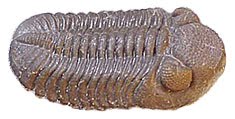[Adventures on Earth for the August 3, 2011, edition of The Review]
These are the lazy, hazy days of summer, also known as the dog days, also known as the time of estivation.
Estivation is a state of torpor in animals, laziness brought on by the heat of summer days.
Animals, during summer, are at their busiest in the cool of morning or in the evening when the sun is going down. The height of the day when temperatures soar is when wild creatures stretch out and doze.
We humans, being animals, would also like to doze away the hottest hours of the day. Our workaday world, though, frowns on that.
So we labor the day away and are tired at night.
The height of summer does not last long. By mid-August a cold front comes through, dropping temperatures for a short while. It warms back up, but that cold front presages arrival of autumn.
Autumn arrives, of course, on Sept. 23, the autumnal equinox. That is when the hours of daylight and darkness are about equal.
In the natural world, autumn arrives in late August to early September. Mother Nature is not picky over dates. Autumn arrives when she says it does, and she is fickle about such things.
It is weather, as well as hours of sunlight, that determine the seasons in the natural world.
By late August and early September, the deep green of summer begins to soften. The progression of native flowers slows down. Very little will bloom from that point on.
Estivation gives way to a frantic preparation for winter. Some creatures store food. Squirrels will bury acorns and other nuts. They forget where they bury it all, but they bury plenty and can generally find enough to last the winter.
Other creatures increase their food intake, transforming calories and protein into fat reserves that will see them through winter.
On the farm, harvest time begins in August. It is the time to get hay into the barn, grains into granaries, and sileage into the silos. The harvest will feed livestock through the winter.
Food for humans has been frozen or canned. By the time the cold snap arrives, most of the work will be done.
The tropical season reaches its peak in a couple of weeks. Already tropical storms have been in the news. More will come as the Cape Verde season heats up.
The tropical Atlantic is now at its warmest, with surface temperatures above 80 degrees Fahrenheit. That is prime conditions for storm development.
Tropical season lasts until the end of November, but begins to slow down about mid-September. For a month the threat of major storms is at its highest. On any given day there may be two or three storms churning in the Atlantic or the Gulf.
Weather patterns take about a week to ten days to pass at this time of year. By mid-September fronts will pass more regularly and weather will change on a moment’s whim.
By the equinox, the one constant about our weather will be change. From day to day it will go from cold to warm to cool to hot. It may rain or not. It may change within 24 hours.
People who now gripe about the heat will gripe because of the fickle weather. Wise people take a jacket and umbrella to work regardless of the forecast.
In the meantime, we have a few weeks of hot weather. It is, after all, the time of estivation. There is no sense rushing autumn.

No comments:
Post a Comment